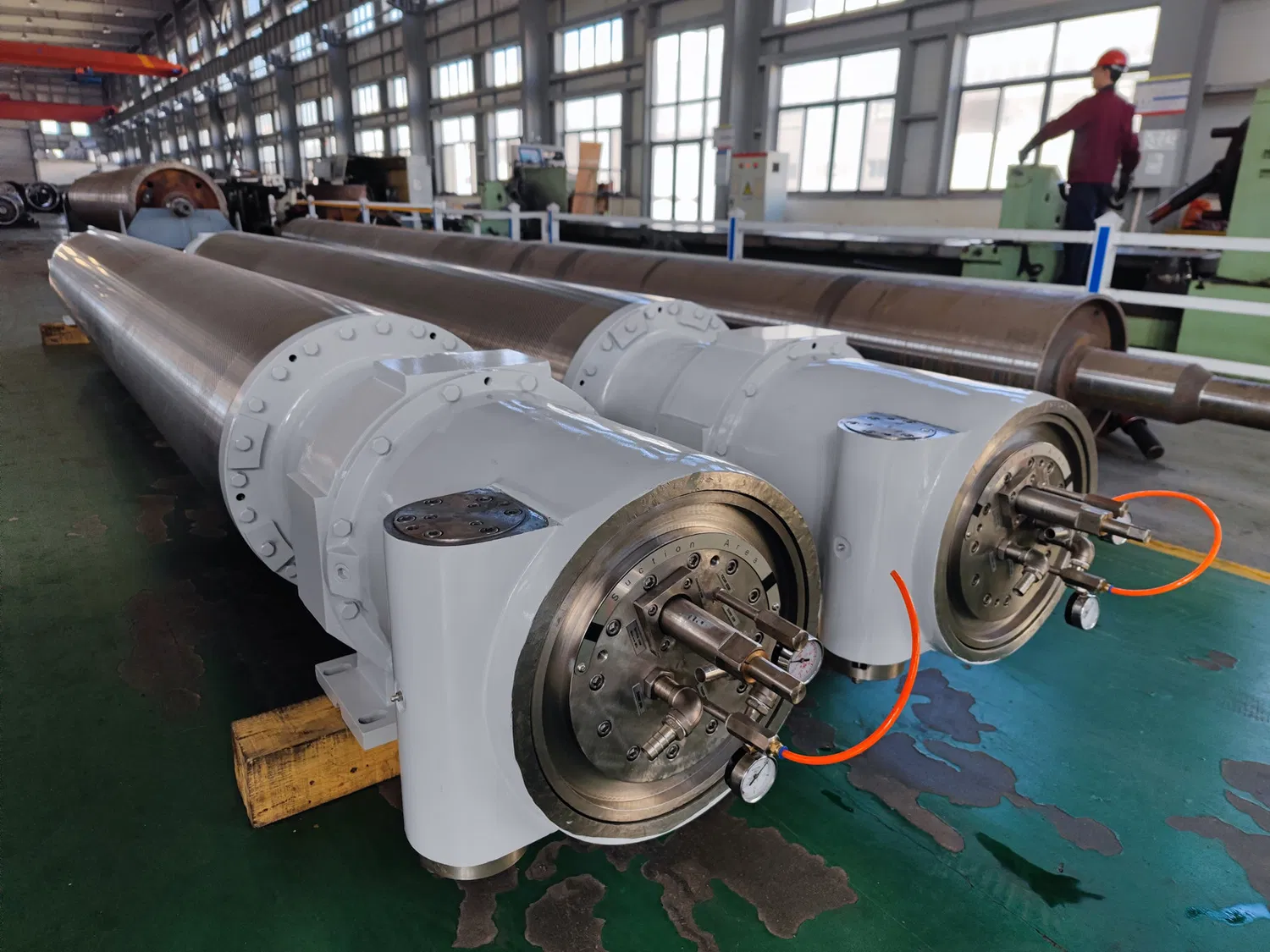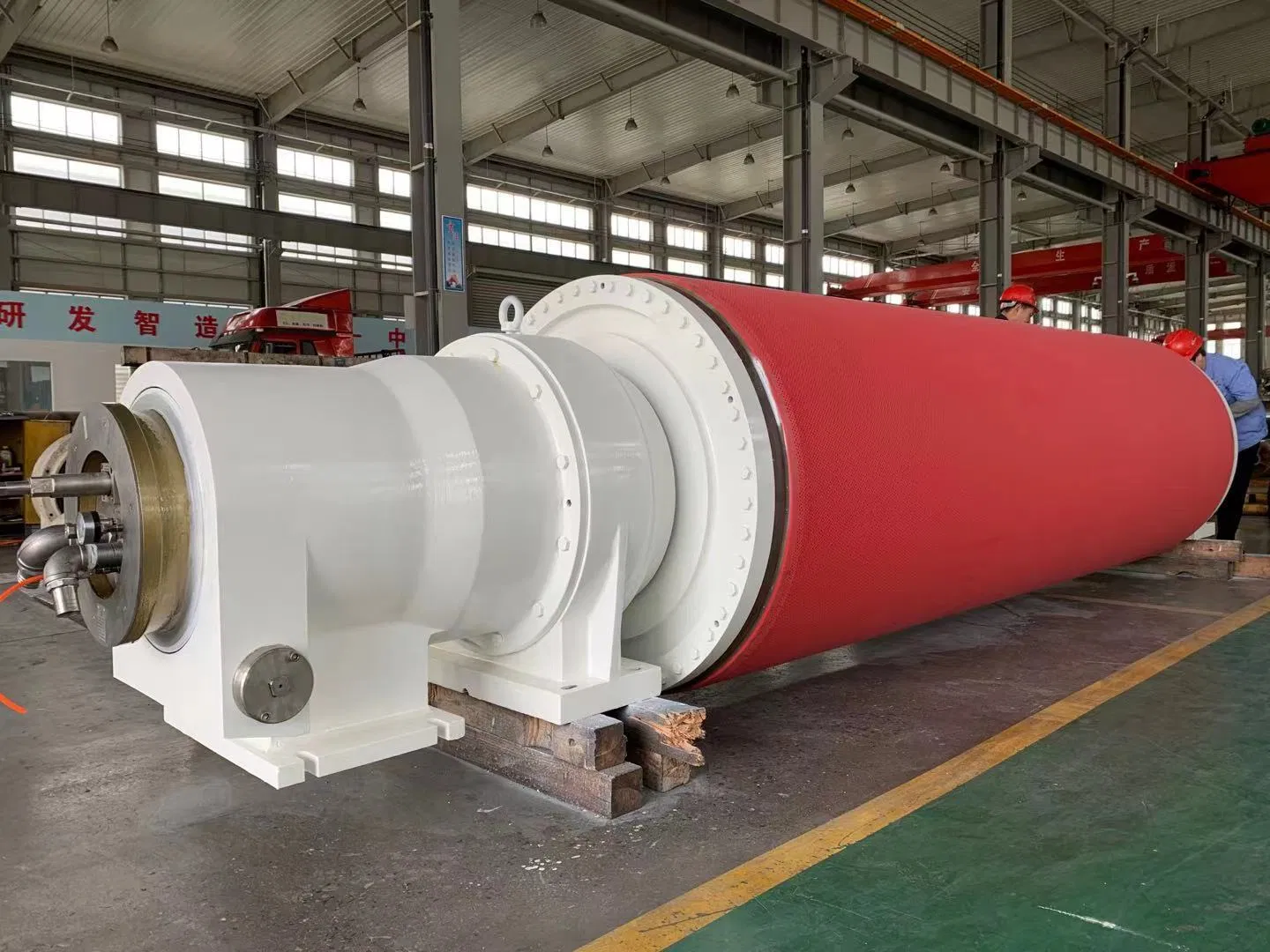Have you ever stopped to consider the intricate machinery that underpins so many of our everyday products? From the paper we write on to the fabrics we wear, industrial processes rely on highly specialized components to achieve efficiency and quality. Among these, the blind hole press roll stands out as a true workhorse, often operating behind the scenes but playing an absolutely critical role in dewatering processes across various industries. Frankly speaking, without this ingenious piece of engineering, many manufacturing lines would grind to a halt, or at the very least, operate far less efficiently.
To be honest, when most people think of industrial rolls, they might picture large, smooth cylinders. However, the blind hole press roll is anything but simple. Its unique design, characterized by thousands of precisely drilled, non-perforating holes, is what gives it its remarkable capability. This article will dive deep into what makes this component so vital, exploring its design, applications, maintenance, and the future innovations shaping its evolution.
Engineering Marvel: Design Principles of the Blind Hole Press Roll
The magic of the blind hole press roll lies in its deceptively simple yet highly engineered design. Unlike traditional drilled rolls that feature through-holes, the blind hole design incorporates holes that do not penetrate the entire thickness of the roll shell. This seemingly minor difference has profound implications for performance, especially in high-speed dewatering applications.
The Science Behind Blind Holes: Enhancing Dewatering Efficiency
The primary function of a press roll in a dewatering process, such as in a paper machine, is to remove water from a web of material. When the web passes through the nip (the contact point) between two rolls, pressure is applied, squeezing out the water. Here's where the blind holes come into play:
- Water Collection and Management: As the web is pressed, the water squeezed out needs a place to go. The blind holes act as tiny reservoirs, collecting this water temporarily. This prevents the water from being reabsorbed into the web after the nip, a phenomenon known as "re-wetting," which significantly reduces dewatering efficiency.
- Hydrodynamic Pressure Reduction: The presence of these holes also helps to reduce the hydrodynamic pressure buildup within the nip. Excessive pressure can lead to crushing or damage to the web, especially with delicate materials. The holes provide channels for the water to escape, distributing the pressure more evenly and allowing for higher pressing forces without damaging the product.
- Improved Nip Performance: Many experts agree that the blind hole pattern helps to create a more uniform pressure profile across the web, leading to more consistent dewatering and a higher dry content percentage post-press. This is crucial for energy efficiency in subsequent drying stages.
Interestingly enough, the size, depth, and pattern of these blind holes are not arbitrary. They are meticulously calculated and optimized based on the specific application, material properties, and desired dewatering rates. This precision engineering is what truly sets the blind hole press roll apart.
Material Selection and Construction: Durability Meets Performance
Given the immense pressures, high speeds, and often corrosive environments in which these rolls operate, material selection is paramount. Typically, blind hole press rolls are constructed from high-grade steel alloys, often with specialized coatings or composite shells.
- Shell Material: The roll shell needs to be incredibly strong and rigid to withstand the pressing forces without deforming. Materials like ductile iron, stainless steel, or even composite materials are chosen for their excellent mechanical properties and resistance to fatigue.
- Coverings: The surface of the roll is often covered with a specialized material, such as rubber, polyurethane, or composite polymers. These coverings are not just for protection; they play a vital role in the dewatering process. They provide the necessary elasticity for optimal nip formation, improve water shedding, and enhance wear resistance. The hardness and composition of the cover are carefully selected based on the application.
- Internal Design: Beyond the shell and cover, the internal structure of the roll, including bearings, shafts, and internal cooling or heating systems (if applicable), is designed for maximum stability and minimal vibration, even at high operating speeds.

Applications Across Industries: Beyond Paper Making
While the paper industry is arguably the most prominent user of the blind hole press roll, its utility extends far beyond the production of paper and board. Any industry requiring efficient dewatering of a continuous web or sheet material can benefit from this technology.
The Paper Industry: A Cornerstone Application
In paper manufacturing, the press section is a critical stage where water content is significantly reduced before the paper web enters the energy-intensive drying section. A highly efficient press section, often featuring multiple blind hole press rolls, can dramatically cut energy costs by reducing the amount of water that needs to be evaporated.
- Increased Dryness: The primary goal is to achieve the highest possible dryness entering the dryer section. Even a one percent increase in dryness can translate into substantial energy savings.
- Improved Paper Quality: Consistent dewatering across the width of the web leads to more uniform paper properties, reducing variations in strength, thickness, and printability.
- Higher Production Speeds: The efficient water handling of blind hole rolls allows paper machines to operate at higher speeds without compromising dewatering performance or paper quality.
Other Industrial Uses: From Textiles to Non-Wovens
The principles of efficient dewatering are not exclusive to paper. Many other industries face similar challenges:
- Textile Industry: In the production of fabrics, after dyeing or washing, textiles need to be dewatered before drying. Blind hole press rolls can be used to squeeze out excess water, preparing the fabric for subsequent processes.
- Non-Woven Fabrics: The manufacturing of non-woven materials, used in everything from hygiene products to geotextiles, often involves forming a web from fibers and then dewatering it. Blind hole technology ensures efficient water removal without damaging the delicate fiber structure.
- Pulp and Board Production: Similar to paper, the production of various types of pulp and board materials also heavily relies on effective dewatering at different stages.
- Mining and Mineral Processing: In some mineral processing applications, slurries need to be dewatered to separate solids from liquids. While the exact setup might differ, the concept of controlled liquid removal is relevant.
Frankly speaking, the versatility of this technology is a testament to its fundamental effectiveness in liquid-solid separation under pressure.
Optimizing Dewatering with Blind Hole Rolls
Achieving optimal dewatering with blind hole rolls isn't just about having the right equipment; it's about understanding the entire process. Factors like nip pressure, roll speed, temperature, and the properties of the material being pressed all influence performance. In my experience, fine-tuning these parameters can unlock significant improvements in efficiency and product quality. The goal is always to maximize water removal while minimizing energy consumption and maintaining product integrity.
Maintenance, Longevity, and Performance Optimization
A high-performance component like the blind hole press roll requires diligent maintenance to ensure its longevity and consistent performance. Given the harsh operating conditions—high speeds, immense pressures, and often abrasive or corrosive environments—wear and tear are inevitable.
Common Wear and Tear: What to Look For
Regular inspection is crucial. Here are some common issues that can affect blind hole press rolls:
- Cover Wear: The roll cover is subjected to constant friction and pressure. Uneven wear, grooving, or hardening of the cover material can lead to poor dewatering, vibration, and even damage to the web.
- Hole Plugging: Over time, fibers, fines, or process chemicals can accumulate and plug the blind holes. This reduces the roll's dewatering efficiency and can lead to uneven pressing.
- Bearing Failure: The bearings supporting the roll shaft are critical. Wear, lubrication issues, or contamination can lead to increased friction, heat, vibration, and eventual catastrophic failure.
- Corrosion and Erosion: Depending on the process fluids, the roll shell and internal components can be susceptible to corrosion or erosion, compromising structural integrity.
- Dynamic Imbalance: As components wear or build up, the roll can become dynamically unbalanced, leading to severe vibrations that affect machine stability and product quality.

Maintenance of Blind Drilled Press Rolls: Best Practices
Proactive and preventative maintenance is key to maximizing the lifespan and efficiency of these rolls.
- Regular Cleaning: Periodic cleaning of the blind holes is essential to prevent plugging. This can involve high-pressure water jets, chemical cleaning, or specialized brushing systems.
- Cover Grinding and Replacement: Roll covers need to be regularly ground to maintain their profile and surface quality. When the cover reaches its wear limit or shows signs of irreparable damage, it must be replaced.
- Bearing Inspection and Lubrication: Bearings should be inspected for wear and properly lubricated according to manufacturer specifications. Predictive maintenance techniques, such as vibration analysis, can detect early signs of bearing distress.
- Dynamic Balancing: Rolls should be periodically re-balanced to ensure smooth operation and prevent vibration-related issues.
- Nip Profile Analysis: Regular checks of the nip profile ensure even pressure distribution across the web, which is vital for consistent dewatering.
It's worth noting that neglecting maintenance can lead to significant downtime, costly repairs, and a drop in production quality. Investing in a robust maintenance program for your blind drilled press rolls pays dividends in the long run.
The Future of Press Roll Technology: Innovations on the Horizon
The world of industrial machinery is constantly evolving, and the blind hole press roll is no exception. While the fundamental principles remain, ongoing research and development are pushing the boundaries of what these components can achieve, focusing on increased efficiency, sustainability, and smart integration.
Smart Rolls and IoT Integration
The rise of Industry 4.0 and the Internet of Things (IoT) is transforming how industrial equipment operates. Future blind hole press rolls are likely to be "smarter," incorporating embedded sensors that monitor critical parameters in real-time.
- Real-time Performance Monitoring: Sensors can track temperature, pressure distribution within the nip, vibration levels, and even the degree of hole plugging.
- Predictive Maintenance: By analyzing this real-time data, machine learning algorithms can predict potential failures before they occur, allowing for scheduled maintenance rather than reactive repairs, minimizing downtime.
- Optimized Control: Data feedback can be used to automatically adjust operating parameters for optimal dewatering efficiency, adapting to changes in material properties or production speeds.
This level of data-driven insight promises to revolutionize maintenance strategies and operational efficiency.
Sustainable Manufacturing and Energy Efficiency
As industries worldwide strive for greater sustainability, the focus on energy efficiency in dewatering processes will only intensify. Innovations in blind hole press roll technology will contribute significantly:
- Advanced Cover Materials: Development of new roll cover materials with improved water-shedding properties, higher wear resistance, and longer lifespans will reduce material consumption and energy needed for drying.
- Optimized Hole Geometries: Further research into the optimal size, shape, and pattern of blind holes could lead to even more efficient water removal, directly translating to lower energy consumption in subsequent drying stages.
- Lighter, Stronger Rolls: The use of advanced composites and manufacturing techniques could lead to lighter rolls that require less energy to rotate, while still maintaining the necessary strength and rigidity.
Advanced Paper Machine Press Section Technology
For the paper industry, specifically, the evolution of the press section will continue to push boundaries. This includes not just the rolls themselves but the entire system:
- New Press Configurations: Development of innovative press configurations that maximize dewatering efficiency in a smaller footprint.
- Integrated Systems: More seamless integration of the press section with upstream and downstream processes, allowing for holistic optimization.
- Digital Twins: The creation of digital twins for press sections, allowing for virtual testing, optimization, and training without impacting live production.
I've found that the drive for continuous improvement in this sector is relentless, ensuring that the blind hole press roll remains at the forefront of dewatering technology.
Conclusion: The Enduring Legacy of the Blind Hole Press Roll
From the hum of a massive paper machine to the subtle processes in textile production, the blind hole press roll is an indispensable component, quietly contributing to the efficiency and quality of countless industrial products. Its ingenious design, focused on precise water management and pressure distribution, has made it a cornerstone of dewatering technology.
We've explored its critical role in enhancing dewatering efficiency, the meticulous engineering behind its construction, and its diverse applications beyond the paper industry. We also delved into the crucial aspects of maintenance, highlighting how diligent care ensures longevity and optimal performance. Looking ahead, the integration of smart technologies, the relentless pursuit of sustainability, and continuous innovation promise to further enhance the capabilities of this vital industrial component. The blind hole press roll isn't just a part of a machine; it's a testament to the power of specialized engineering in solving complex industrial challenges. It truly is an unsung hero.
For more detailed information, please visit our official website:blind hole press roll
About the author: Dr. Alistair Finch is a seasoned industrial engineer with over 20 years of experience specializing in fluid dynamics and material processing. His expertise spans paper manufacturing, textiles, and non-woven industries, with a particular focus on optimizing dewatering technologies. Dr. Finch has consulted for numerous global manufacturers, helping them enhance efficiency and sustainability in their press sections. He is passionate about the intersection of traditional engineering and emerging smart technologies.


